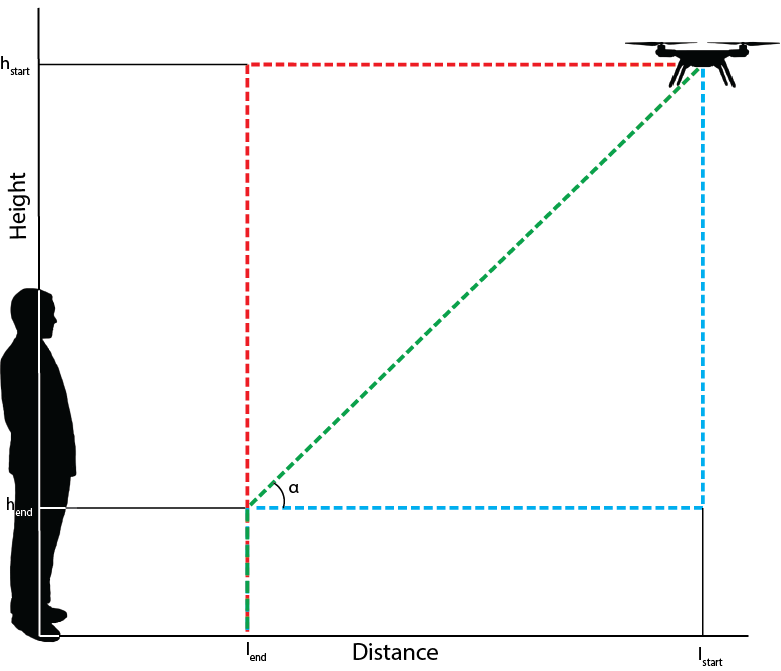PRE2015 3 Groep2 week4
Approaching Users
Multiple factors can play a role, for the user to feel safe and comfortable with the drone approaching him. So far little research has been done regarding approaching people in a user friendly way, as can be seen in Research from week 3. In order to be able to construct constrains and preferences for the approaching, four experiments have been devised:
- Experiment 1: Landing distance
- Experiment 2: Flying path
- Experiment 3: Flying speed
- Experiment 4: Flying height
The main focus of this project will be on the first two experiments where we compute values for the optimal landing distance (relative to the user) and look for a preferred flying path when approaching the user.
Experiment 1: Landing distance
Have the test subject stand on a given spot (l0). The distances 1, 2, 3…10 meters are marked with masking tape (distance to test subject). The drone will start at a distance of 10 meters (= lstart) and approach the person at a steady speed of approximately v = 1 m/s. It does so at a height of h = 1 meter. Whenever the test subject feels like the current distance between him and the drone is the most comfortable distance to land, the test subject will give off a sign and the drone will be given the order to land (lend).
Choice of horizontal speed
Average walking speed is researched to be 1.4 m/s second. For safety and the accuracy of the experiment however, the speed of the drone has been set slightly lower; v = 1 m/s.
Choice of height
For the flying height of the first experiment, a height of 1 meter is chosen. This because of the following: Lower heights would result in issues with obstacle avoidance, whereas higher heights might pose danger for the user. Eye-height of possible users might vary from 1.50 m to 2.20 m, making this domain unsuitable for flight. Given the accuracy of the drone for keeping the height another 0.5 meter is implemented as safety feature.
Way flying
- Situation A
- The drone flies horizontally to a certain distance lend then the drone land vertically.
- Situation B
- The drone flies diagonally to a certain point lend en hend. Then the drone lands vertically.
- Situation C
- The drones lowers itself vertically to a certain height hend. It then flies horizontally to a certain distance lend before it lands vertically on the ground.
